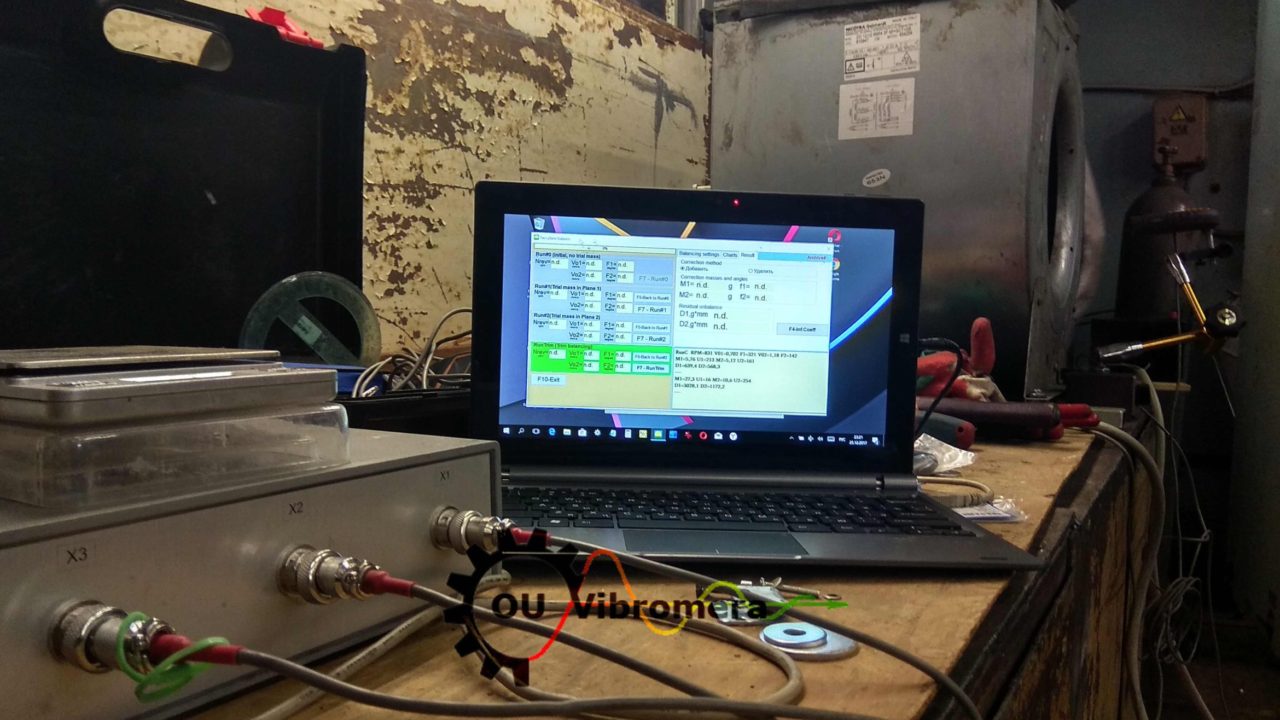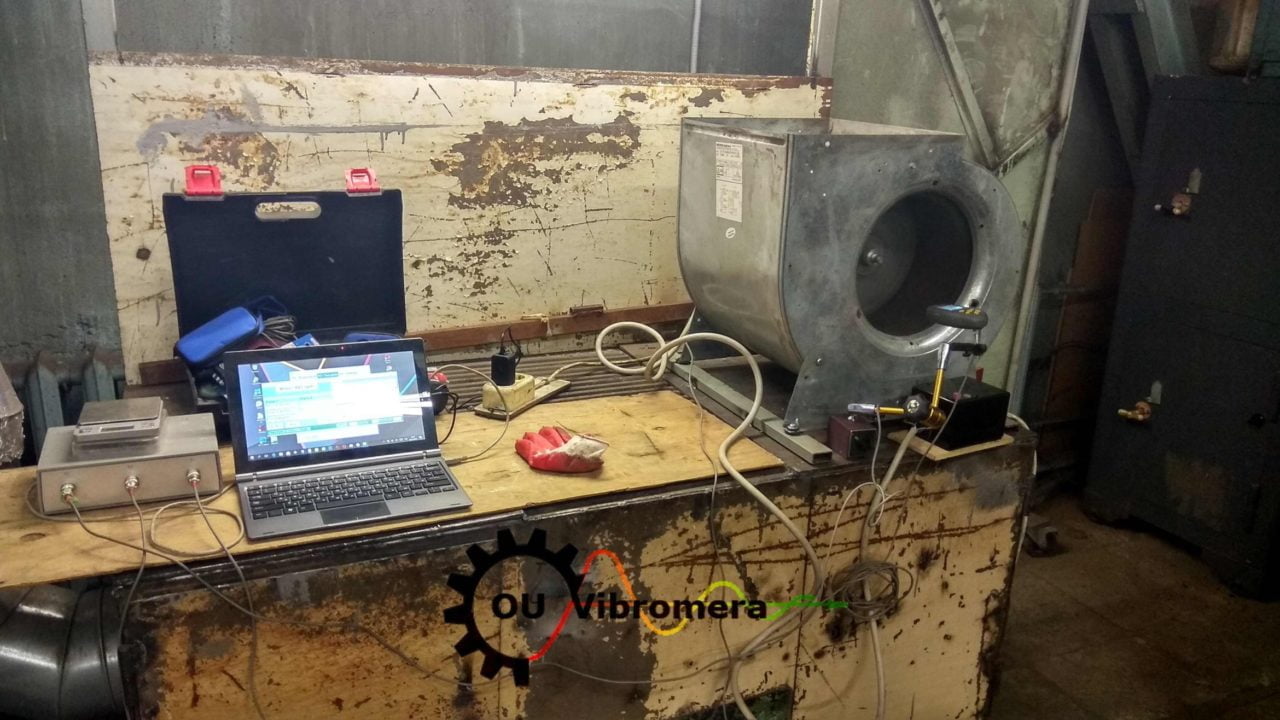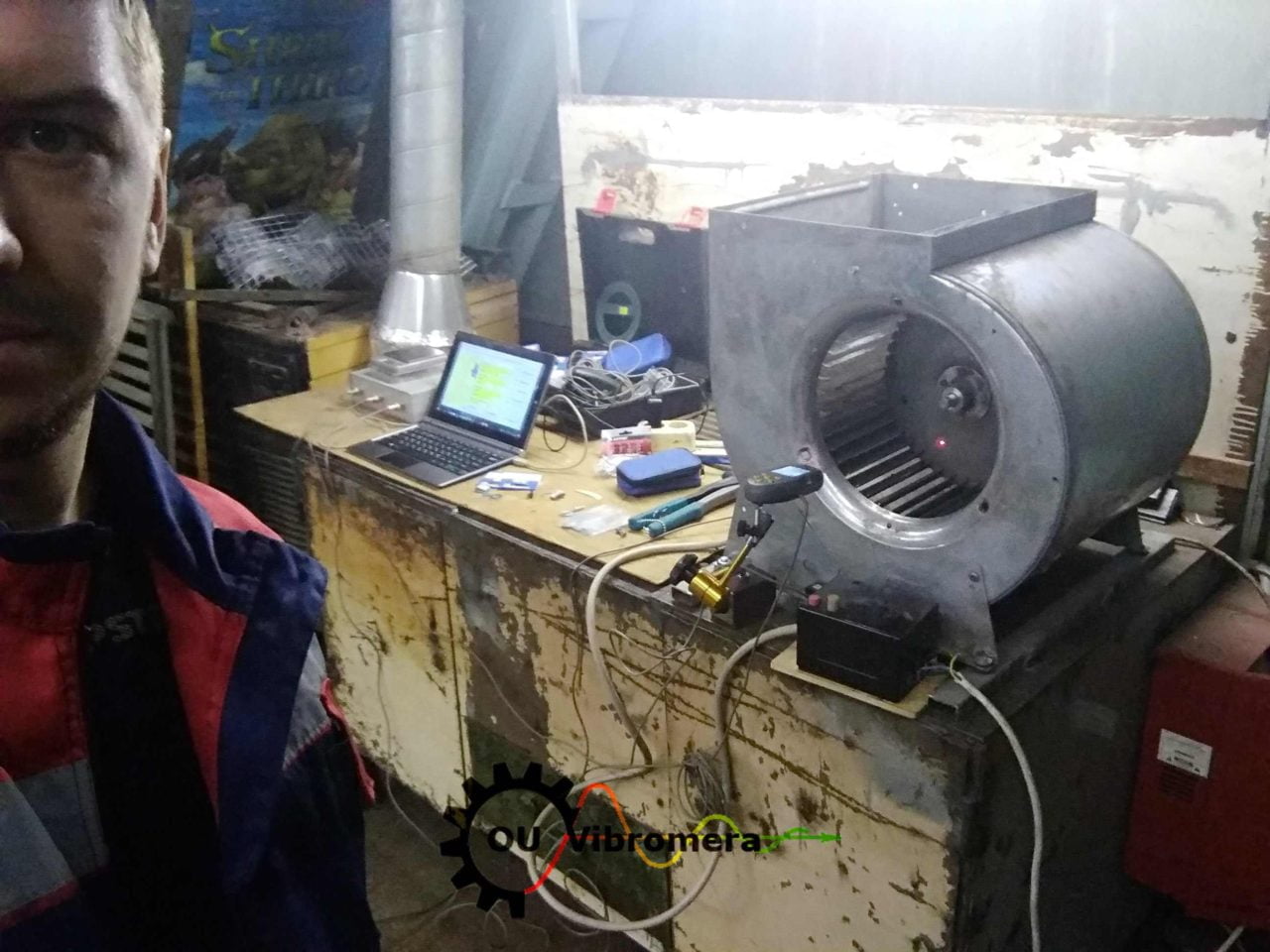Balancing a Squirrel-Cage Fan Wheel with the First-Generation Balanset-1 Device
In a recent project, the first-generation Balanset-1 device was employed for the precise task of balancing a squirrel-cage fan wheel. While newer Balanset-1A models come in more compact aluminum cases, the original Balanset-1 still proves to be a reliable and effective tool for such specialized tasks.
The balancing process was carried out in four crucial steps:
- प्रारंभिक कंपन माप: The first step involved assessing the initial vibration level of the squirrel-cage fan wheel to establish a baseline for the balancing procedure.
- Calibration and Test Weights: The Balanset-1 device was used to set up test weights and measure the resulting changes in vibration at a known point on the rotor.
- Corrective Measures: Based on the collected data, the device calculated the necessary adjustments in terms of weight and angle. Corrective weights were then placed accordingly to neutralize the imbalance.
- Result Verification: The final step involved checking the results to ensure that the balancing had been successful.
The original Balanset-1 device, despite being from the first generation, provided accurate and reliable readings that led to the successful balancing of the squirrel-cage fan wheel. Although newer models like the Balanset-1A come in smaller, aluminum cases, the efficacy of the original device in rotor balancing and vibration analysis was clearly demonstrated.


